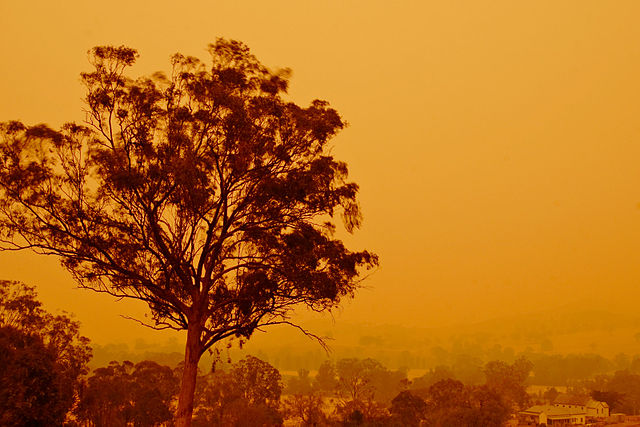 A smoky haze is covering many cities across Australia, including Sydney.
A smoky haze is covering many cities across Australia, including Sydney.
The country is experiencing one of its worst bushfires in decades and faces overwhelming losses. Approximately one-fourth of the population is in fire danger, and four people are already confirmed dead. The state of Victoria has issued a code red -- the highest alert in a decade.
Though one million hectares of land are already burnt, conditions are only expected to worsen as hot, dry air sweeps across the country. Citizens are even warned of firestorms, dangerous phenomenons occurring from powerful bushfires.
Let’s learn what causes these bushfires, and how they got out of control.
The Good and the Bad
 Bushfires are naturally occurring fires, though human activity such as burning cigarettes may also cause it.
Bushfires are naturally occurring fires, though human activity such as burning cigarettes may also cause it.
These fires are not a bad thing; they even shape the natural ecosystem. Many plants rely on fires to regenerate, and fires clear or prepare the land for farming. Bushfires are usually easy to control, but the current drought and human activities are fueling the fire.
Most of Australia’s natural biodiversity is flame-resistant, meaning it will not fuel the bushfires. But humans cut down the plants for settlement and replace them with flammable wood.
Not only this, but Australia’s current drought is also hurting biodiversity. Australia’s natural species are also affected by human settlement and drought. Animals that eat forest ground debris, such as potoroos, are decreasing in population. Without anyone to eat the flammable leaves on the forest floors, fires spread faster.
How Firestorms Form
 Firestorms form when the hot air from large fires interacts with the atmosphere above it. This creates a cloud made from the fire’s smoke and ashes when it combines with the water vapors in the clouds.
Firestorms form when the hot air from large fires interacts with the atmosphere above it. This creates a cloud made from the fire’s smoke and ashes when it combines with the water vapors in the clouds.
Usually, this process will not create a firestorm. Instead, a harmless cloud–a pyrocumulus–forms above the fire.
However, under extreme climate conditions, such as the current drought, the plume of smoke can rise higher where it condenses forming ice particles. As these particles collide, they set off a pattern of lightning and gusts of wind that can spark fires -- sometimes 60 miles (100 km) away!
Such firestorms, known as pyrocumulonimbus, are relatively rare but have been observed in Australia during the deadly blaze of 2009, and in the U.S state of California.
While conditions are already bad in Australia, firestorm warnings place another burden on citizens. Firestorms bring more dry air, along with strong winds to carry the flames. The general unpredictability of a firestorm makes it hard to track. The rough winds can switch directions suddenly, leaving scientists bewildered. The safest course of action is to evacuate early and wait for the storm to run out of fuel. For now, scientists are using the current fire to identify where new fires may occur.
While the fires continue to ravage homes, groups such as the Red Cross quickly provide support and supplies to the injured and homeless. For more details on how firestorms form, see the video below.
Sources: BBC, Guardian, theconversation, ga.gov.au, nsw.gov.au







